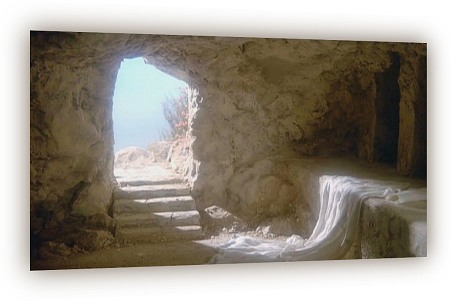 In 1 Corinthians 10:6, Paul says that the sins of the Israelites in the wilderness happened as an “example” that we might not follow in their footsteps. On the other hand, we find many positive models of faith in the Old Testament we can follow such as some men from the tribe of Issachar.
In 1 Corinthians 10:6, Paul says that the sins of the Israelites in the wilderness happened as an “example” that we might not follow in their footsteps. On the other hand, we find many positive models of faith in the Old Testament we can follow such as some men from the tribe of Issachar.
In 1 Chronicles 12:32 we read this about them, “Of Issachar, men who had understanding of the times, to know what Israel ought to do, 200 chiefs, and all their kinsmen under their command.” What did they understand? They knew it was time to make David king over all of Israel, not just Judah. They understood the times in which they lived.
The Pharisees, during the time of Jesus, lacked such insight. In Matthew 16:1-4, Jesus scolded them for not recognizing Him as their long-awaited Messiah. They correctly predicted the weather based on signs in the sky, but they missed all the signs identifying Jesus as the promised One of Israel. They failed to understand the times in which they lived.
What about us today? Do we understand the times in which we live?
There are eight times more references regarding Jesus’ return to earth than for His first appearance.
There are eight times more references regarding Jesus’ return to earth than for His first appearance. In Matthew 24, Jesus repeatedly instructs us to be watching and ready for His return. He said this after providing many signs of His return so we would know when that time was drawing near.
In spite of this, many believers are asleep today. They hear no urgency regarding Jesus’ return in their churches. Instead, many pastors downplay any imminence regarding Jesus’ appearing. They tell us that Jesus will someday bring heaven to us, but not any time soon. Jesus’ return is a far distant event, they tell us, without any relevance for our current lives.
This is NOT how the early church regarded Jesus’ appearing.
Early Believers Eagerly Awaited Jesus’ Appearing
If there is one thing that the Lord has impressed upon me during the past year, it’s that the apostles instilled an eager anticipation of Jesus’ return in the hearts of early believers.
In 1 Corinthians 1:7 Paul said this, “. . . as you wait for the revealing of our Lord Jesus Christ.” The apostle repeated this same thought in Philippians 3:20, “But our citizenship is in heaven, and from it we await a Savior, the Lord Jesus Christ.” The sense in both verses is not just that of simply waiting, but of an eager anticipation of Jesus' return for them. The believers in Corinth and Philippi deeply longed for Jesus’ appearing. They watched for it with great desire as well as fervent expectation.
We also see this same sentiment among the Thessalonian believers. Turning to Jesus, away from their idolatry, led to their eager awaiting of His return (see 1 Thess. 1:8-10). In Titus 2:13, Paul said that the result of turning to Christ signified, among other things, “waiting for our blessed hope, the appearing of the glory of our great God and Savior, Jesus Christ.” For these early followers of Christ, believing the Gospel was synonymous with waiting and watching for Jesus’ appearance.
A GEICO commercial portrays a spy fleeing from both armed men and a black helicopter. His phone rings as his adversaries appear ready to capture him. Thinking the call is from those coming to rescue him he answers the phone shouting, “Where are you?” We then see and hear his mom calmly talking about squirrels in the attic after which the narrator says, “If you’re a mom, you call at the worst time. It’s what you do.”
Reflecting on what Paul said in the verses quoted above, we might expect him to say something similar: “If you believe the Gospel, you live in expectancy of Jesus’ return. It’s what you do.”
Passage after passage in the New Testament points to Jesus’ appearing as our immediate expectation.
New Testament believers watched for and anticipated the appearing of Jesus as something that could happen at any moment.
The Early Church
Many object to the idea of such imminency reasoning that if this was the expectation of New Testament believers, why did no one in the early church, after the time of the apostles, believe this?
Church history tells us a much different story than what many might expect.
The Didache, which means “teaching” in the Greek, is a brief document from the early decades of the church that provides insight into its beliefs regarding Jesus’ return or the rapture, as we call it today. Scholars believe the Didache originates from as early as AD 70, although it likely was not formally compiled until around AD 300.
Chapter 16 of this short document contains instructions regard watching for the coming of the Lord, “Watch for your life's sake. Let not your lamps be quenched, nor your loins unloosed; but be ready, for you know not the hour in which our Lord will come.”
Reflecting on Jesus’ command in Matthew 24, the Didache reflects the same imminency regarding the Lord’s appearing that we see in throughout the New Testament.
The church, well into the fourth century AD, remained almost uniformly premillennial. The early church looked for Jesus to return, setup His kingdom, and reign for 1,000 years. Prominent early church fathers such as Papias, Irenaeus, Justin Martyr, and Tertullian strongly advocated the literal interpretation of Revelation 19-20. They uniformly proclaimed their belief in Jesus’ return to reign upon the earth!
Irenaeus, writing late in the second century AD envisioned the Lord coming for His church just as Paul promised in 1 Thessalonians 4.
Irenaeus, a prominent early church father, believed Jesus would return for His church before a period of tribulation upon the earth. In his famous book Against Heresies, Book 5, Chapter 29, he said this, “And therefore, when in the end the Church shall be suddenly caught up from this, it is said, ‘There shall be tribulation such as has not been since the beginning, neither shall be.’”
Using the same terminology as Paul did in 1 Thessalonians 4:17, Irenaeus said Jesus would take believers out of this world before a time of great tribulation upon the earth. Irenaeus, writing late in the second century AD envisioned the Lord coming for His church just as Paul promised in 1 Thessalonians 4. This would happen, according to Irenaeus, before a time of tribulation on the earth.
Another reference to the imminency of Jesus’ return comes from a most interesting person in church history known as Ephraem the Syrian (also known as Saint Ephraim of Edessa). Born in AD 306, he became a monk, a poet, a writer of hymns, and a preacher. Some believe he attended the Council of Nicea in AD 325.
In his sermon entitled On the Last Times, the Antichrist, and the End of the World, Ephraim clearly referred to the Lord coming for believers before the day of the Lord, before the tribulation. As such, he strongly encouraged believers to be ready for the soon appearing of Jesus to take His church out of this world after which the world would be engulfed in a time of great turmoil and suffering.
The belief in the imminency of Jesus’ return for His church did not end with the apostles. It carried over into the early centuries of the church. As late as the fourth century AD, we find an example of someone warning believers to be ready for Jesus’ return ahead of a period of tribulation upon the earth.
What Are the Signs Today?
Fine, you may be saying, but how does that relate to us today? Is there any evidence Jesus is coming soon? After two thousand years of waiting, should we still be expecting Him to appear at any moment?
YES! (I’m so glad you asked!) There are many, many signs we are living in the days leading up to the Great Tribulation and hence to Jesus’ return for us just prior to that, known as the rapture.
In Matthew 24:15, Jesus repeated Daniel’s prophecy that a coming world leader, the antichrist, would defile the temple in Jerusalem during a time of tribulation upon the earth. Irenaeus, 150 years later, also wrote about how the antichrist would someday perform such an abomination in the temple.
Although the Jews currently have no temple, a group known as the Temple Institute is busily preparing for its construction. The architectural designs are complete as are many of the furnishings for the Third Temple. The altar is ready for sacrifices and if you are a Levite, you can attend a special school to train for serving as a priest in the new temple.
The signs Jesus spoke of in Matthew 24:4-14 are coming true today as never before in human history. We live in amazing times!!!
The signs Jesus spoke of in Matthew 24:4-14 are coming true today as never before in human history. Indicators of Jesus’ return to earth at the end of the tribulation abound today. Earthquakes, wars, rumors of wars, famines, and persecution of believers already occur with increasing frequency and intensity and will continue to do so all through the tribulation. Just like birth pangs, these signs are occurring more frequently and with greater intensity.
Ezekiel 38-39 speaks of a great war against Israel in the later days. Remarkably, we see the nations lining up exactly and precisely as predicted in these chapters. The nations prophesied to come against Israel have now joined forces as never before in history. The countries that remain on the sidelines during this conflict, including Saudi Arabia, are now aligning with Israel, at least to some degree.
Each day, we see increased tensions between Israel and the leaders of this coalition: Russian, Iran, and Turkey. The discoveries of rich deposits of natural gas and oil in Israel add to the intrigue and provide much motivation for these countries to someday attack Israel.
As Amir Tsarfati recently stated, today we see the history being written that will lead up to the great conflict of Ezekiel 38-39.
The Bible also predicts that a one world government and one world religion will engulf the world during the tribulation. The foundations for both these realities are carefully being laid so that once the church is gone, they can quickly be put in place. Not since the time of the Roman Empire has there been such an emphasis on unifying the planet under one world order.
With so many indicators of the approaching tribulation abounding today, why do so many preachers push Jesus’ appearing to the far distant future?
Why do so few believers recognize the signs of Jesus’ soon imminent return? Why do so few really understand the times in which we live?
I am often perplexed myself by these questions.
In my next post, I will examine why I believe so many pastors as well as believers do not understand the day in which we live and hence are not watching for Jesus’ return.







 Last night I saw an extraordinarily good documentary called Genesis: Paradise Lost that was both informative and rich in proof of the Genesis account. I highly recommend this movie, which may be playing in a theater near you this coming Thursday night, November 16.
Last night I saw an extraordinarily good documentary called Genesis: Paradise Lost that was both informative and rich in proof of the Genesis account. I highly recommend this movie, which may be playing in a theater near you this coming Thursday night, November 16. As I sat in class the first day, I begin to realize it was not what I expected. I should have dropped the course and signed up for another one. But I delayed in deciding upon an alternative and ended up stuck in the class.
As I sat in class the first day, I begin to realize it was not what I expected. I should have dropped the course and signed up for another one. But I delayed in deciding upon an alternative and ended up stuck in the class. So what???
So what??? In 1 Corinthians 10:6, Paul says that the sins of the Israelites in the wilderness happened as an “example” that we might not follow in their footsteps. On the other hand, we find many positive models of faith in the Old Testament we can follow such as some men from the tribe of Issachar.
In 1 Corinthians 10:6, Paul says that the sins of the Israelites in the wilderness happened as an “example” that we might not follow in their footsteps. On the other hand, we find many positive models of faith in the Old Testament we can follow such as some men from the tribe of Issachar. A couple weeks back, I wrote about the fulfillment of prophecy before our eyes as it related to UN resolution 2334 and the expected January 15, 2017 peace conference in Paris. The world seemed intent on finally establishing a Palestinian state at the expense of Israel’s security.
A couple weeks back, I wrote about the fulfillment of prophecy before our eyes as it related to UN resolution 2334 and the expected January 15, 2017 peace conference in Paris. The world seemed intent on finally establishing a Palestinian state at the expense of Israel’s security.